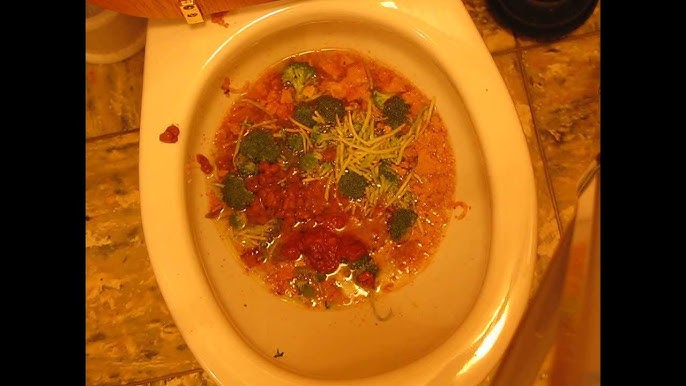Can You to Dispose of Food in the Toilet?
Can You to Dispose of Food in the Toilet?
Blog Article
Do you find yourself searching for advise around What Can Happen If You Flush Food Down the Toilet??

Intro
Many people are commonly faced with the predicament of what to do with food waste, particularly when it comes to leftovers or scraps. One typical inquiry that emerges is whether it's alright to purge food down the commode. In this write-up, we'll look into the reasons why individuals may consider purging food, the repercussions of doing so, and alternate approaches for correct disposal.
Reasons why people may take into consideration purging food
Lack of awareness
Some individuals might not recognize the prospective injury triggered by purging food down the bathroom. They might incorrectly believe that it's a safe practice.
Ease
Purging food down the commode might feel like a fast and very easy solution to taking care of undesirable scraps, particularly when there's no close-by trash bin offered.
Negligence
In some cases, individuals might simply choose to flush food out of sheer idleness, without considering the effects of their actions.
Consequences of flushing food down the bathroom
Environmental impact
Food waste that ends up in waterways can add to air pollution and injury water communities. In addition, the water made use of to flush food can stress water resources.
Plumbing issues
Purging food can cause clogged up pipes and drains pipes, creating pricey pipes repairs and hassles.
Kinds of food that need to not be flushed
Coarse foods
Foods with fibrous structures such as celery or corn husks can get tangled in pipes and cause obstructions.
Starchy foods
Starchy foods like pasta and rice can absorb water and swell, leading to obstructions in pipelines.
Oils and fats
Greasy foods like bacon or cooking oils must never be purged down the bathroom as they can solidify and create obstructions.
Proper disposal techniques for food waste
Using a garbage disposal
For homes equipped with waste disposal unit, food scraps can be ground up and flushed via the plumbing system. Nevertheless, not all foods appropriate for disposal in this manner.
Recycling
Certain food packaging products can be reused, reducing waste and reducing environmental effect.
Composting
Composting is an environmentally friendly means to throw away food waste. Organic products can be composted and used to improve dirt for gardening.
The value of appropriate waste management
Lowering ecological damage
Appropriate waste administration techniques, such as composting and recycling, aid minimize air pollution and protect natural deposits for future generations.
Safeguarding plumbing systems
By avoiding the technique of flushing food down the bathroom, property owners can avoid costly plumbing repair services and preserve the integrity of their pipes systems.
Final thought
Finally, while it might be appealing to flush food down the toilet for convenience, it is essential to recognize the potential consequences of this activity. By taking on proper waste monitoring methods and taking care of food waste sensibly, individuals can add to healthier plumbing systems and a cleaner atmosphere for all.
FLUSH FOOD DOWN THE TOILET?
FLUSHING FOOD CAN CAUSE BLOCKED DRAINS IN YOUR HOME
All of the plumbing fixtures in your home are connected to the same sewer pipe outside of your home. This outdoor sewer pipe is responsible for transporting all the wastewater from your home to the Council sewer mains. Even small pieces of food that go down the kitchen sink can cause problems for your sewer. It should therefore be obvious that flushing larger bits of food, such as meat, risks a clog in either the toilet itself or the sewer pipes. Flushing greasy food is even more problematic because oil coagulates when it cools, coating the interior lining of your pipes.
THE TOILET IS NOT A BIN
Food isn’t the only thing that people shouldn’t be flushing down the toilet. People use the toilet to dispose of all kinds of things such as tampons, makeup wipes, dental floss, kitty litter and even underwear. Water goes to great lengths to educate residents about the high costs and stress placed on wastewater treatment systems simply from people flushing the wrong stuff down the toilet. It costs taxpayers millions of dollars each year, and homeowners thousands in blocked drain repairs.
FLUSHING FOOD IS A WASTE OF WATER
Flushing food is a waste of our most precious resource - water. In June this year Level 1 water restrictions were introduced to protect water supply from drought conditions. Much of New South Wales continues to be affected by prolonged drought with recent figures revealing up to 97 per cent of the state remains in drought. Depending on whether you have a single or dual flush toilet, every single flush uses between five and 11 litres of water. In the current climate this is a huge amount of water to be wasting on flushing food that should be placed in the bin (or better yet, the compost).
https://www.jabplumbingsolutions.com.au/blog/can-you-flush-food-down-the-toilet

Do you enjoy reading up on ? Post a comment below. We'd be happy to see your insights about this write up. In hopes that you visit us again before long. In case you liked our blog entry please don't forget to share it. I take joy in your readership.
Schedule Today! Report this page